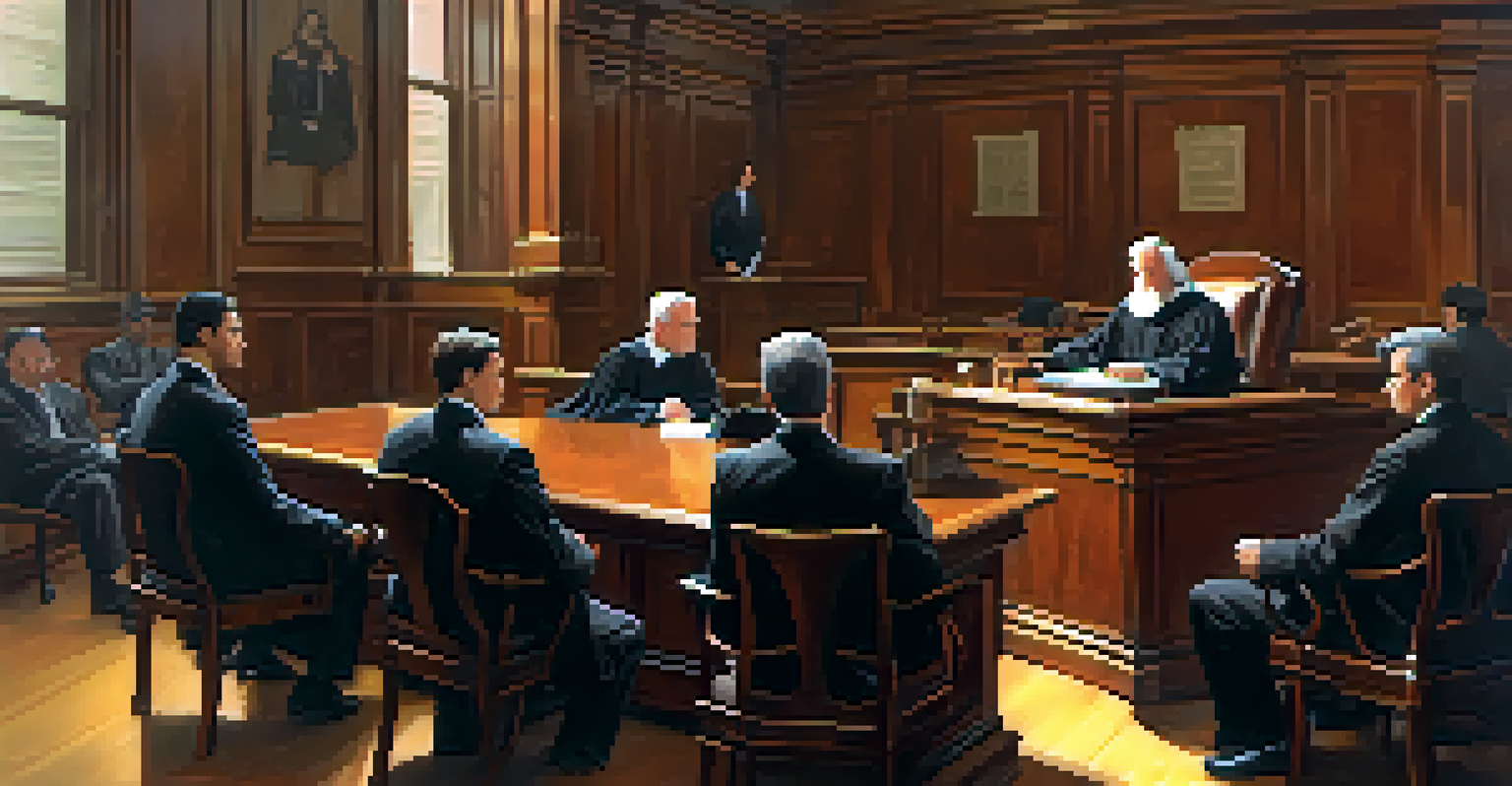Legal Considerations for Bystanders in Self Defense

What is Self-Defense and Who is a Bystander?
Self-defense is the legal right to protect oneself from harm. It’s often invoked when someone uses force to repel an imminent threat. A bystander is a person who is present at a scene but is not directly involved in the altercation.
The law doesn’t require you to intervene, but it does allow you to do so if you feel it’s safe and necessary.
Understanding the distinction between a participant in self-defense and a bystander is crucial. Bystanders may feel compelled to intervene, but doing so carries potential legal implications. Knowing your role can significantly influence the outcome of a situation.
For example, consider a scenario where a person is attacked in a park. A bystander witnessing the attack may feel morally obligated to help. However, their legal standing could vary depending on their actions, which is something worth considering.
Legal Principles Governing Self-Defense
Self-defense laws vary by jurisdiction, but they generally allow individuals to use reasonable force to protect themselves or others. However, the concept of 'reasonable' can be subjective, leading to different interpretations by law enforcement and courts. It's essential to know these principles to avoid legal repercussions.

In many cases, self-defense must be proportional to the threat faced. For instance, if someone is pushed, responding with lethal force may be deemed excessive. This principle also applies to bystanders who decide to take action.
Understanding Self-Defense Rights
Self-defense laws allow individuals to protect themselves, but the concept of 'reasonable' force can be subjective.
Understanding these legal principles can help bystanders assess whether intervening is appropriate. It’s always better to err on the side of caution, as misjudging a situation can lead to serious legal consequences.
Duty to Rescue: What Are Your Obligations?
In some jurisdictions, bystanders have a legal obligation to assist individuals in peril, known as the duty to rescue. This duty can vary widely, as some places enforce it strictly, while others do not require any action. Understanding local laws is key for anyone who might witness a dangerous situation.
In an emergency, the best thing you can do is call for help if you’re not sure what to do.
However, this duty does not typically extend to using force. A bystander may be required to call for help but isn’t necessarily obligated to intervene physically. This distinction can be crucial when weighing the risks of involvement.
For example, if you see someone being attacked, you may need to call the police rather than confront the attacker. This approach can protect you from legal liabilities while still fulfilling your moral obligation.
Potential Legal Risks for Bystanders
Intervening in a self-defense situation can expose bystanders to various legal risks. Depending on their actions, they could face charges ranging from assault to wrongful injury. Even well-intentioned interventions can backfire legally, which is why awareness is crucial.
Moreover, the escalation of violence is a real concern. If a bystander intervenes and the situation worsens, they could be held responsible for the outcome. Thus, understanding the potential consequences of involvement is vital.
Bystander's Legal Obligations
Bystanders may have a duty to assist in emergencies, but this does not usually require physical intervention.
For instance, if a bystander attempts to separate fighting individuals but inadvertently causes further harm, they could find themselves facing legal scrutiny. Being informed can help mitigate these risks.
When It’s Appropriate to Intervene
Knowing when to intervene can be a tough decision for bystanders. Generally, if someone’s life is in immediate danger, acting swiftly might be justified. However, assessing the situation beforehand is essential to ensure that your involvement is both necessary and legally sound.
A good rule of thumb is to consider whether your intervention will make a situation better or worse. If you believe that your presence could escalate tensions, it might be wiser to remain a passive observer and call for professional help instead.
For instance, if you see a physical altercation escalating but feel outmatched, calling the police rather than stepping in could be the safest and most responsible choice. This decision not only protects you but also allows trained professionals to handle potentially volatile situations.
Legal Protections for Bystanders in Emergencies
Certain legal protections exist for bystanders who act in good faith to assist others in emergencies. Many jurisdictions have 'Good Samaritan laws' that shield individuals from liability when providing assistance, as long as their actions are reasonable and intended to help.
These laws encourage bystanders to help in emergencies without fear of legal repercussions. However, understanding the limitations of these protections is equally important, as they may not cover actions deemed reckless or unnecessary.
Risks of Intervening as a Bystander
Intervening in conflicts can expose bystanders to legal risks, making it crucial to assess the situation carefully.
For example, if a bystander attempts to perform CPR without proper training and inadvertently causes harm, they might not be protected under Good Samaritan laws. Knowing these laws can empower bystanders to act appropriately while also understanding their legal rights.
Conclusion: Navigating the Complex Legal Landscape
Navigating the legal landscape surrounding self-defense and bystander intervention can be complex. Each situation is unique, and the laws governing them can differ significantly based on location and circumstances. Being informed about your rights and responsibilities can help you make better decisions in critical moments.
Always consider the potential legal implications before intervening in a conflict. It’s essential to weigh the risks and benefits of your actions carefully, as the consequences can be significant.

Ultimately, the goal is to ensure safety for both yourself and others. By understanding the legal considerations involved, bystanders can act more confidently and responsibly when faced with a crisis.